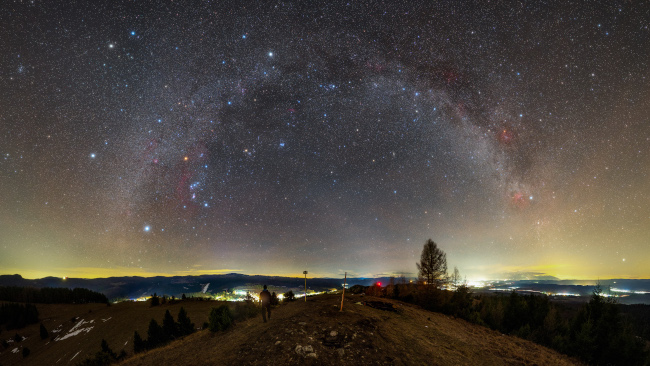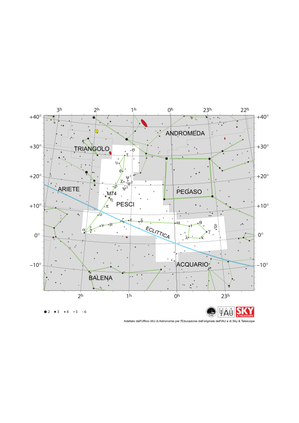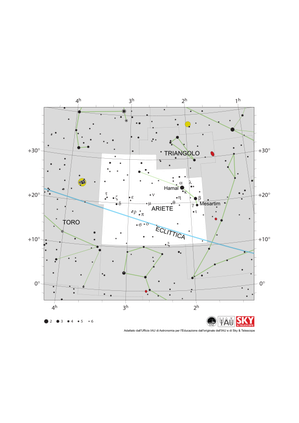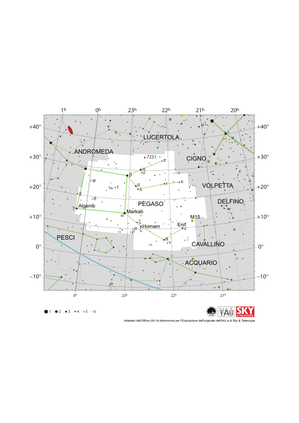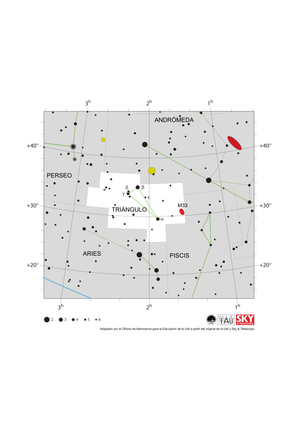Termine del Glossario Pesci
Descrizione I Pesci sono una costellazione dello Zodiaco: le stelle che la compongono si trovano nella parte di cielo intersecats dall'eclittica, cioè con il piano definito dall'orbita della Terra intorno al Sole. Quindi, dal nostro punto di vista qui sulla Terra, possiamo vedere regolarmente il Sole, e anche gli altri pianeti del Sistema solare, passare in questa costellazione. Nel caso del Sole, ciò avviene da circa metà marzo a metà aprile, periodo che comprende l'equinozio di primavera. Naturalmente, se il sole è nella costellazione, è impossibile vederne le stelle. I Pesci sono una delle 88 costellazioni moderne definite dall'Unione Astronomica Internazionale, ma le sue origini risalgono a molto prima: era già una delle 48 costellazioni nominate dall'astronomo Claudio Tolomeo nel II secolo.
Termini correlati
Vedi questo termine in altre lingue
status del termine e della definizione La definizione originale di questo termine in inglese é stata approvata da un ricercatore astronomo e da un docente La traduzione di questo termine e della sua definizione sono ancora in attesa di approvazione
Il Glossario Multilingue OAE é un progetto dell'Ufficio IAU per la didatticadell'astronomia (OAE) in collaborazione con l'ufficio IAU OAO per la DivulgazioneAstronomica (OAO). I termini e le definizioni sono stater scelte, scritte eriviste da un impegno collettivo da parte di OAE, i Centri e i Nodi OAE e iCoordinatori Nazionali per la Didattica dell'Astronomia e da altri volontari.Potete trovare una lista completa dei crediti, Tutti i termini del glossarioE le definizioni sono pubblicate su Creative Commons CC BY-4.0 licenza e dovrebbero essere accreditate ad IAU OAE.
Se noti un errore di fatto o di traduzione in questo termine del glossario, per favore contattaci.
File multimediali correlati
Calda notte invernale sulla regione di Spiš
Crediti: Robert Barsa/IAU OAE
License: CC-BY-4.0 Creative Commons Attribuzione 4.0 Internazionale (CC BY 4.0) icone
Diagrami correlati
Mappa della Costellazione dell'Acquario
Crediti: Adattato dall'Ufficio IAU ai Astronomia per l'educazione dall'originale di IAU/Sky & Telescope
License: CC-BY-4.0 Creative Commons Attribuzione 4.0 Internazionale (CC BY 4.0) icone
Mappa della Costellazione dei Pesci
Crediti: Adattato dall'Ufficio IAU di Astronomia per l'Educazione dall'originale di IAU/Sky & Telescope
License: CC-BY-4.0 Creative Commons Attribuzione 4.0 Internazionale (CC BY 4.0) icone
Mappa della costellazione dell'Ariete
Crediti: Adattato dall'Ufficio IAU di Astronomia per l'educazione dall'originale di IAU/Sky & Telescope
License: CC-BY-4.0 Creative Commons Attribuzione 4.0 Internazionale (CC BY 4.0) icone
Mappa della Costellazione di Pegaso
Crediti: Adattato dall'Ufficio di Astronomia per l'Educazione della IAU dall'originale della IAU e di Sky & Telescope.
License: CC-BY-4.0 Creative Commons Attribuzione 4.0 Internazionale (CC BY 4.0) icone
Mappa della Costellazione del Triangolo
Crediti: Adattato dall'Ufficio di Astronomia per l'Educazione della IAU dall'originale della IAU e di Sky & Telescope.
License: CC-BY-4.0 Creative Commons Attribuzione 4.0 Internazionale (CC BY 4.0) icone
